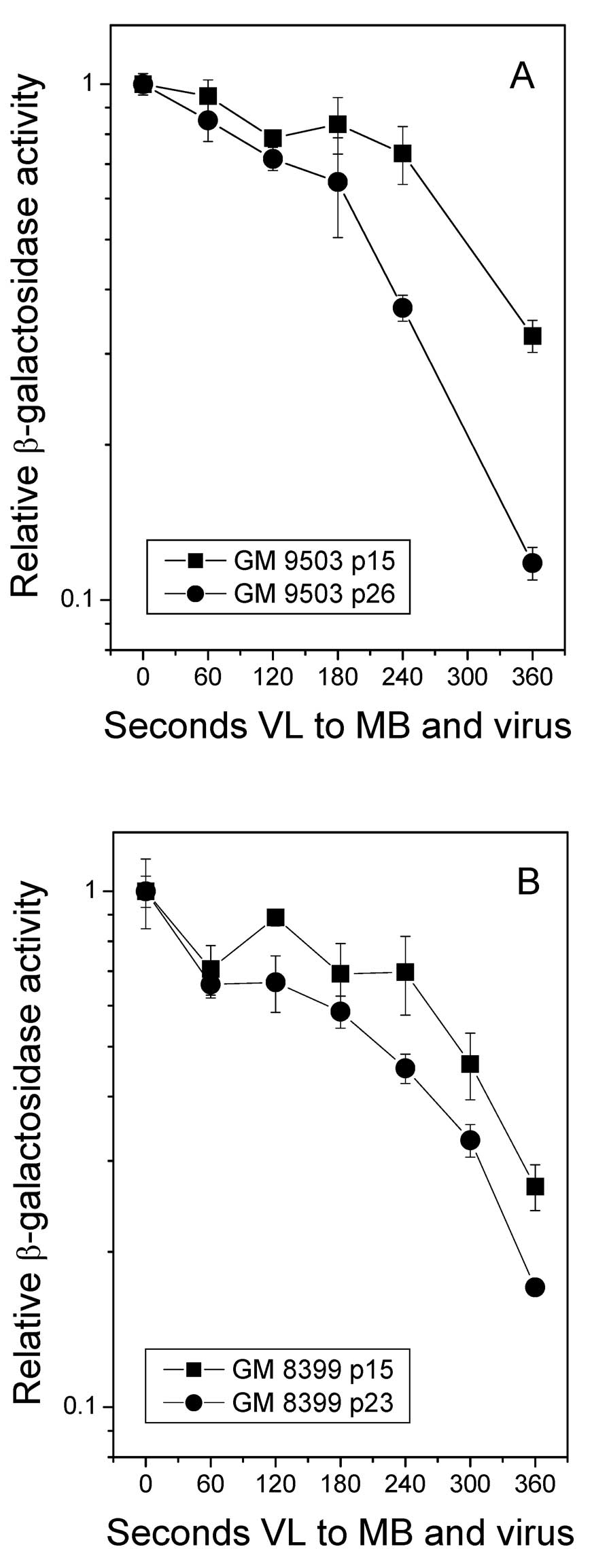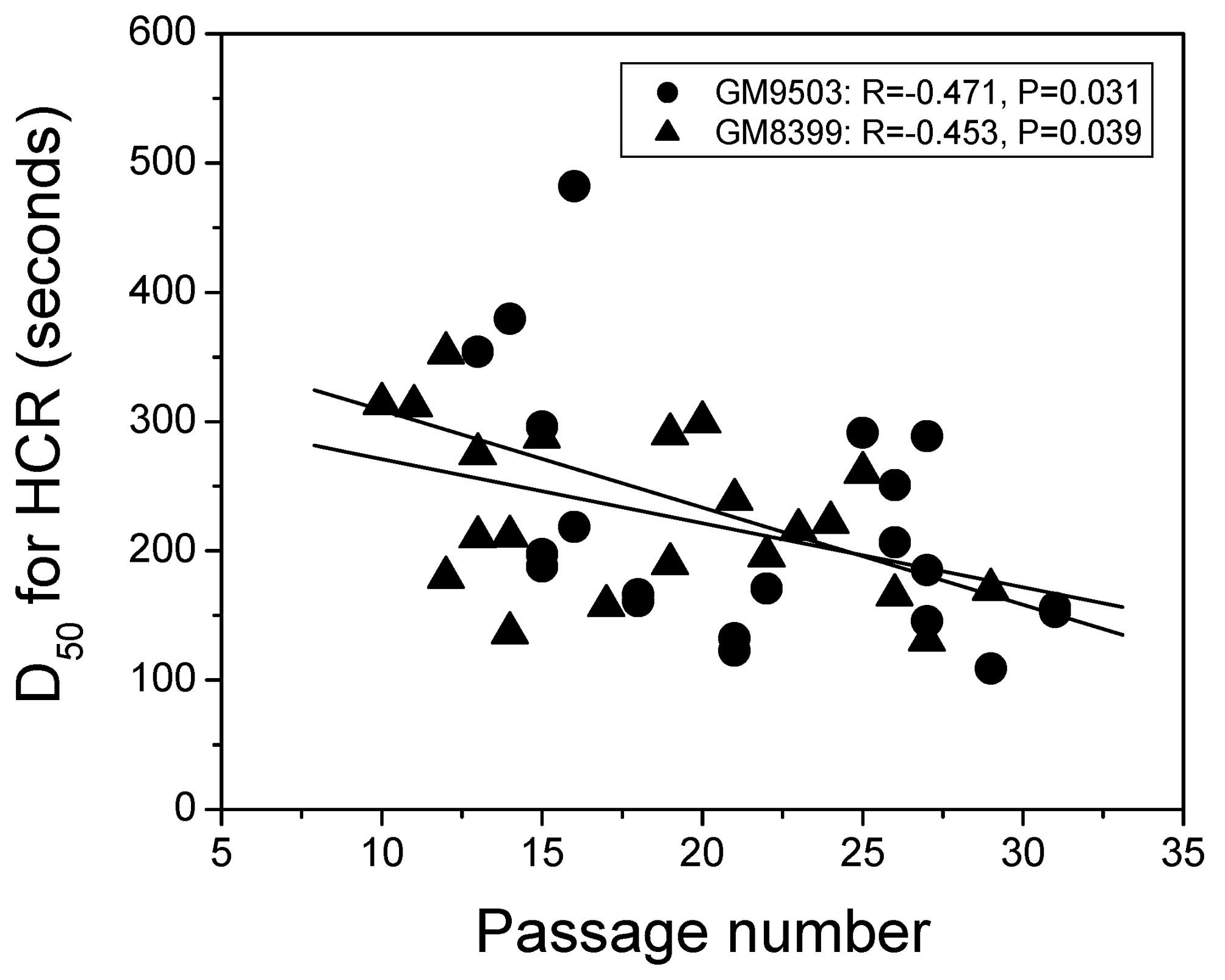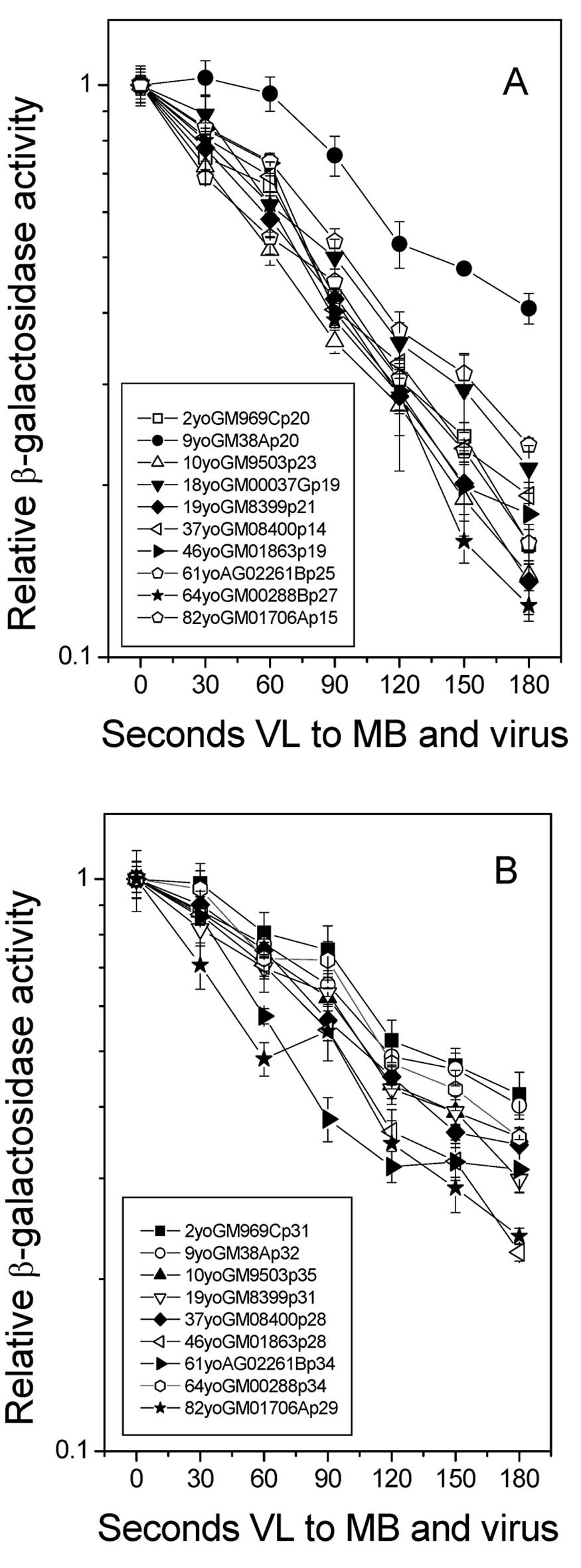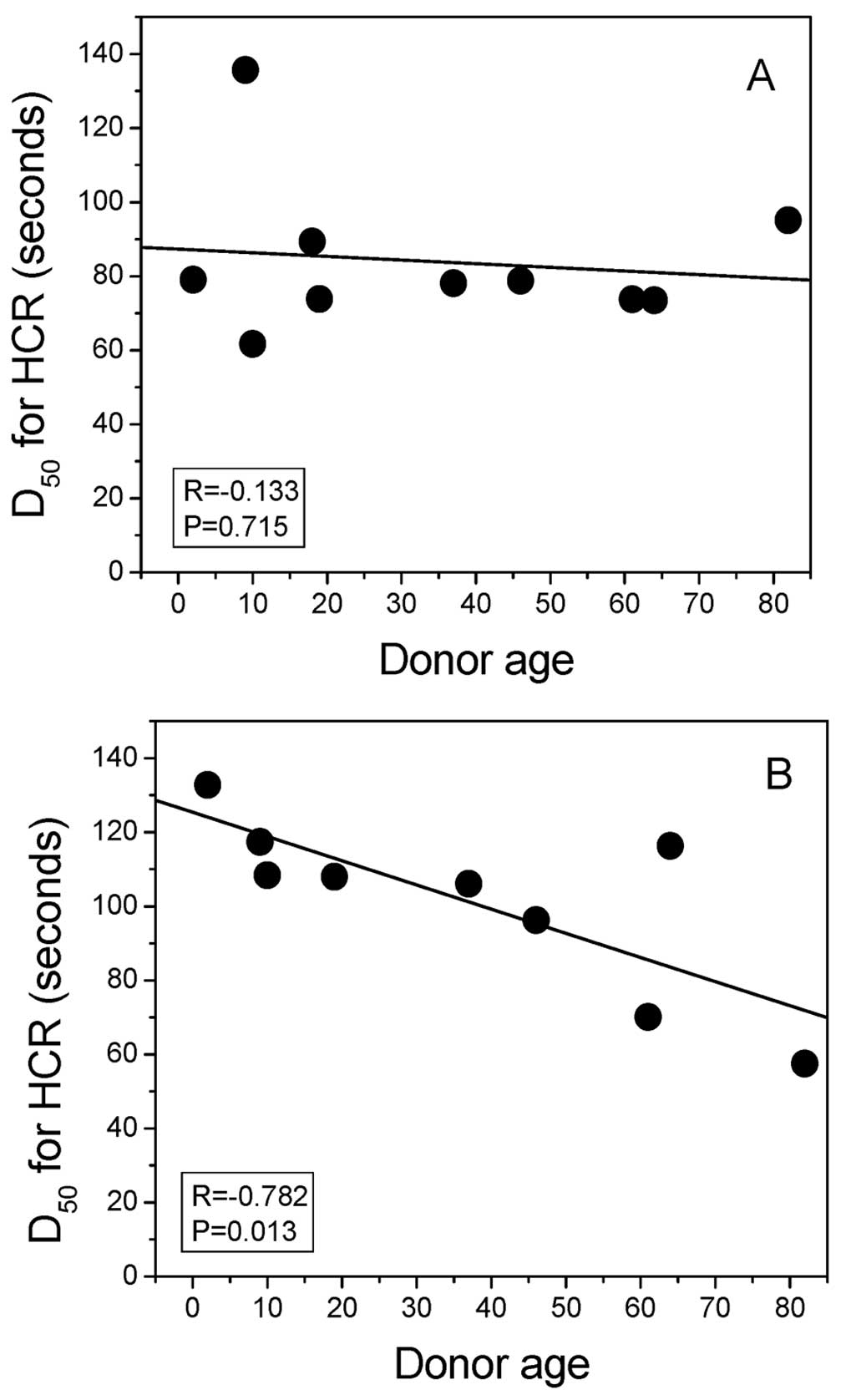|
1
|
Maynard S, Schurman SH, Harboe C, de
Souza-Pinto NC and Bohr VA: Base excision repair of oxidative DNA
damage and association with cancer and aging. Carcinogenesis.
30:2–10. 2009. View Article : Google Scholar : PubMed/NCBI
|
|
2
|
Tuo J, Jaruga P, Rodriguez H, Bohr VA and
Dizdaroglu M: Primary fibroblasts of Cockayne syndrome patients are
defective in cellular repair of 8-hydroxyguanine and
8-hydroxyadenine resulting from oxidative stress. FASEB J.
17:668–674. 2003. View Article : Google Scholar
|
|
3
|
Chen SK, Hsieh WA, Tsai MH, Chen CC, Hong
AI, Wei YH and Chang WP: Age-associated decrease of oxidative
repair enzymes, human 8-oxoguanine DNA glycosylases (hOgg1), in
human aging. J Radiat Res. 44:31–35. 2003. View Article : Google Scholar : PubMed/NCBI
|
|
4
|
Szczesny B, Hazra TK, Papaconstantinou J,
Mitra S and Boldogh I: Age-dependent deficiency in import of
mitochondrial DNA glycosylases required for repair of oxidatively
damaged bases. Proc Natl Acad Sci USA. 100:10670–10675. 2003.
View Article : Google Scholar : PubMed/NCBI
|
|
5
|
Cabelof DC, Raffoul JJ, Ge Y, Van Remmen
H, Matherly LH and Heydari AR: Age-related loss of the DNA repair
response following exposure to oxidative stress. J Gerontol A Biol
Sci Med Sci. 61:427–434. 2006. View Article : Google Scholar : PubMed/NCBI
|
|
6
|
Ksiazek K, Piatek K and Witowski J:
Impaired response to oxidative stress in senescent cells may lead
to accumulation of DNA damage in mesothelial cells from aged
donors. Biochem Biophys Res Commun. 373:335–339. 2008. View Article : Google Scholar : PubMed/NCBI
|
|
7
|
Yuan H, Kaneko T and Matsuo M: Increased
susceptibility of late passage human diploid fibroblasts to
oxidative stress. Exp Gerontol. 31:465–474. 1996. View Article : Google Scholar : PubMed/NCBI
|
|
8
|
Matsuo M, Ikeda H, Sugihara T, Horiike S,
Okano Y and Masaki H: Resistance of cultured human skin fibroblasts
from old and young donors to oxidative stress and their glutathione
peroxidase activity. Gerontology. 50:193–199. 2004. View Article : Google Scholar
|
|
9
|
Kaneko T, Tahara S, Taguchi T and Kondo H:
Accumulation of oxidative DNA damage, 8-oxo-2′-deoxyguanosine, and
change of repair systems during in vitro cellular aging of cultured
human skin fibroblasts. Mutat Res. 487:19–30. 2001.
|
|
10
|
Kassam SN and Rainbow AJ: Deficient base
excision repair of oxidative DNA damage induced by methylene blue
plus visible light in xeroderma pigmentosum group C fibroblasts.
Biochem Biophys Res Commun. 359:1004–1009. 2007. View Article : Google Scholar
|
|
11
|
Kassam SN and Rainbow AJ: UV-inducible
base excision repair of oxidative damaged DNA in human cells.
Mutagenesis. 24:75–83. 2009. View Article : Google Scholar : PubMed/NCBI
|
|
12
|
Leach DM and Rainbow AJ: Early host cell
reactivation of an oxidatively damaged adenovirus-encoded reporter
gene requires the Cockayne syndrome proteins CSA and CSB.
Mutagenesis. 26:315–321. 2011. View Article : Google Scholar : PubMed/NCBI
|
|
13
|
Pitsikas P, Lee D and Rainbow AJ: Reduced
host cell reactivation of oxidative DNA damage in human cells
deficient in the mismatch repair gene hMSH2. Mutagenesis.
22:235–243. 2007. View Article : Google Scholar : PubMed/NCBI
|
|
14
|
Addison CL, Hitt M, Kunsken D and Graham
FL: Comparison of the human versus murine cytomegalovirus immediate
early gene promoters for transgene expression by adenoviral
vectors. J Gen Virol. 78:1653–1661. 1997.PubMed/NCBI
|
|
15
|
Slamenova D, Kuboskova K, Horvathova and
Robichova S: Rosemary-stimulated reduction of DNA strand breaks and
FPG-sensitive sites in mammalian cells treated with
H2O2 or visible light-excited methylene blue.
Cancer Lett. 177:145–153. 2002. View Article : Google Scholar : PubMed/NCBI
|
|
16
|
Floyd RA, West MS, Eneff KL and Schneider
JE: Methylene blue plus light mediates 8-hydroxyguanine formation
in DNA. Arch Biochem Biophys. 273:106–111. 1989. View Article : Google Scholar : PubMed/NCBI
|
|
17
|
Tuite EM and Kelly JM: Photochemical
interactions of methylene blue and analogues with DNA and other
biological substrates. J Photochem Photobiol B. 21:103–124.
1993.
|
|
18
|
Graham FL and Prevec L: Manipulation of
adenovirus vectors. Methods Mol Biol. 7:109–128. 1991.PubMed/NCBI
|
|
19
|
Pitsikas P, Francis MA and Rainbow AJ:
Enhanced host cell reactivation of a UV-damaged reporter gene in
pre-UV-treated cells is delayed in Cockayne syndrome cells. J
Photochem Photobiol B. 81:89–97. 2005. View Article : Google Scholar : PubMed/NCBI
|
|
20
|
Takahashi Y, Moriwaki S, Sugiyama Y, Endo
Y, Yamazaki K, Mori T, Takigawa M and Inoue S: Decreased gene
expression responsible for post-ultraviolet DNA repair synthesis in
aging: a possible mechanism of age-related reduction in DNA repair
capacity. J Invest Dermatol. 124:435–442. 2005. View Article : Google Scholar
|
|
21
|
Merkle TJ, O’Brien K, Brooks PJ, Tarone RE
and Robbin JH: DNA repair in human fibroblasts, as reflected by
host-cell reactivation of a transfected UV-irradiated luciferase
gene, is not related to donor age. Mutat Res. 554:9–17. 2004.
View Article : Google Scholar : PubMed/NCBI
|


















